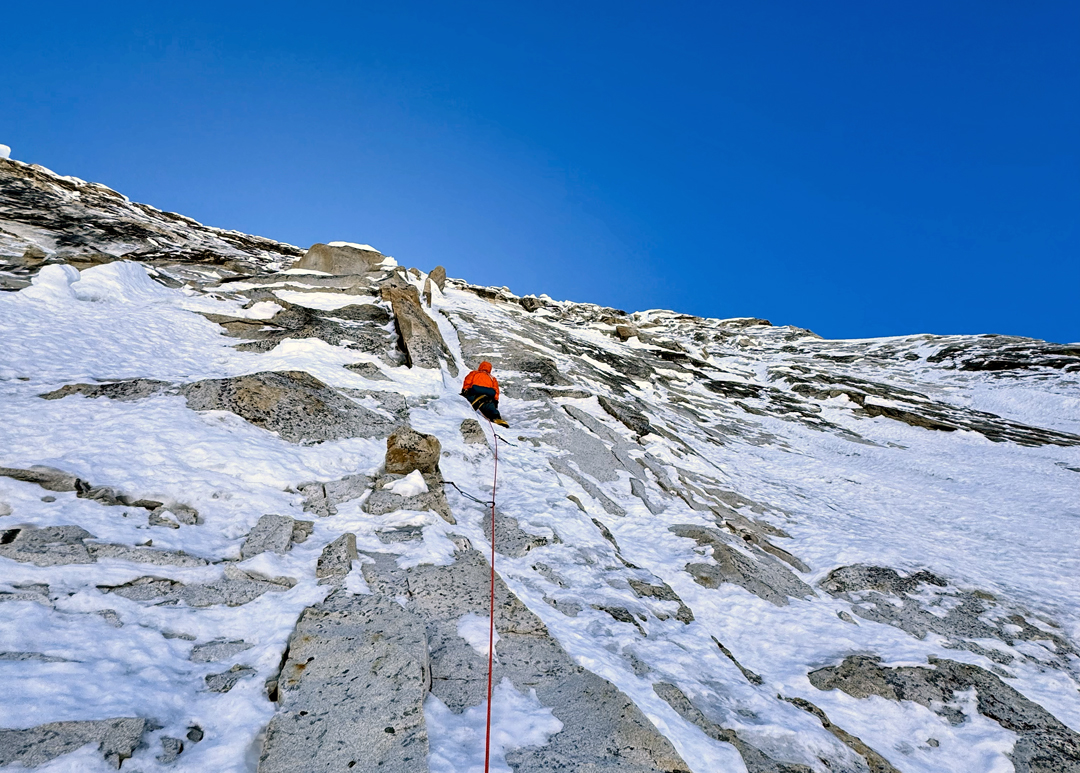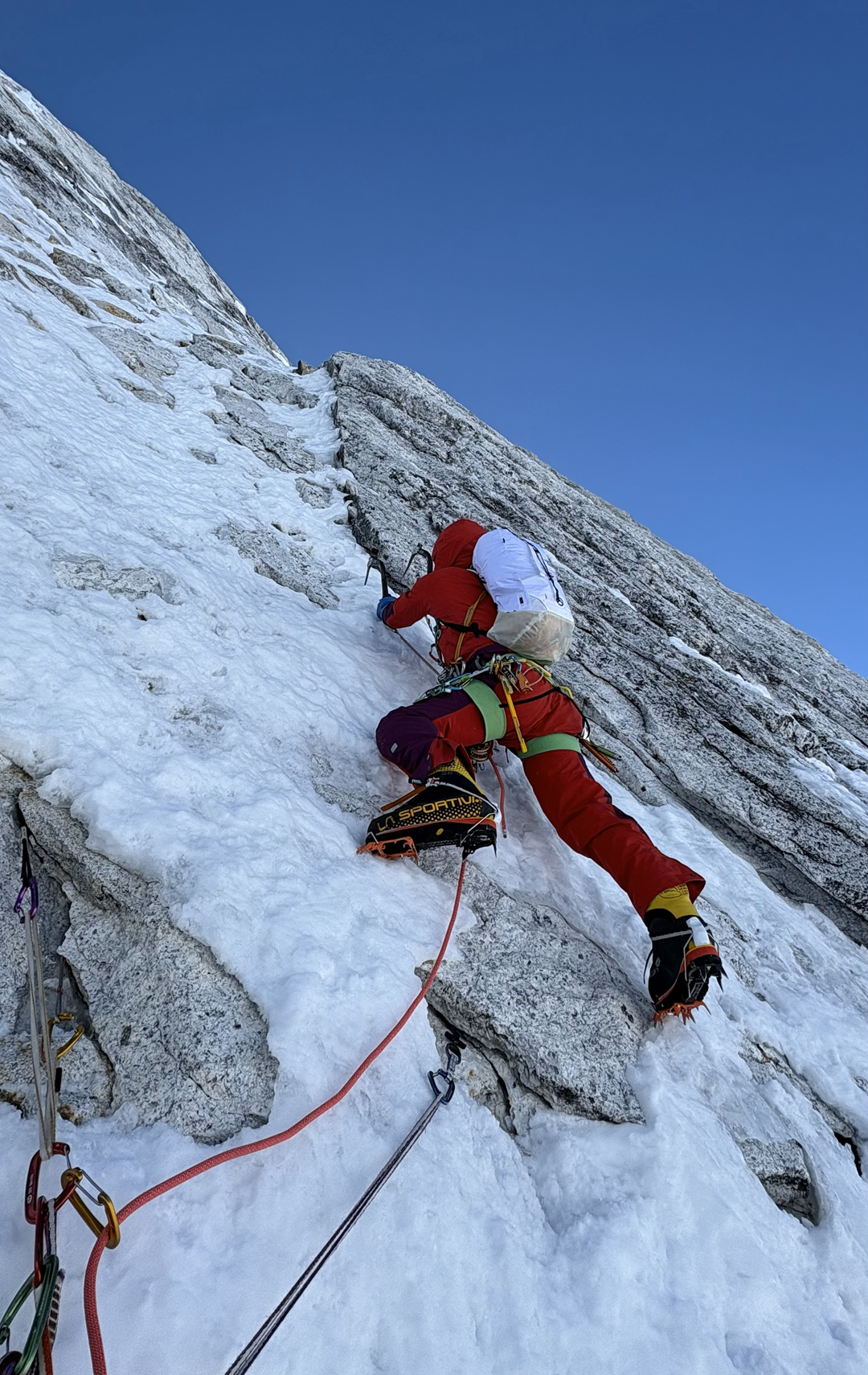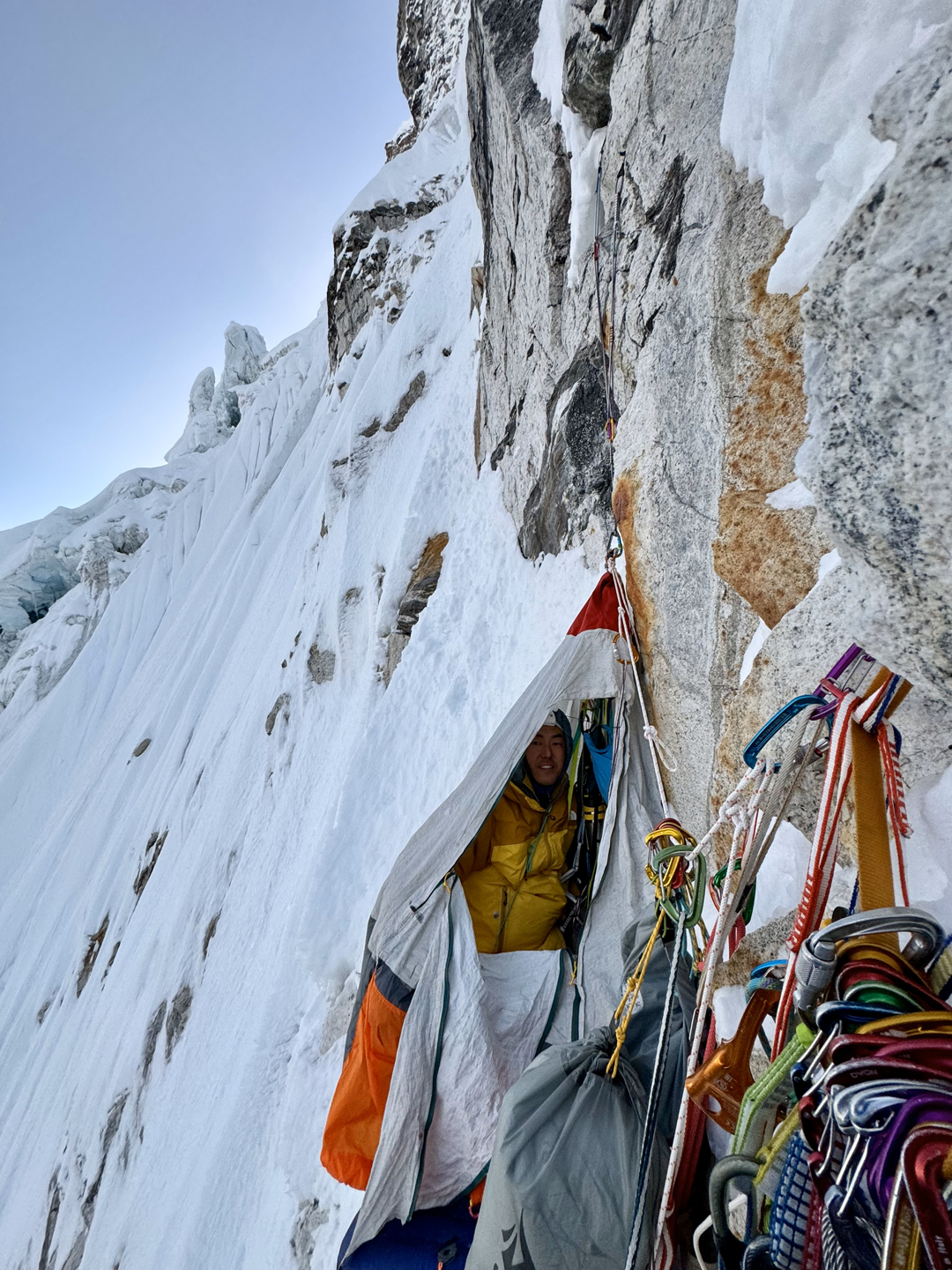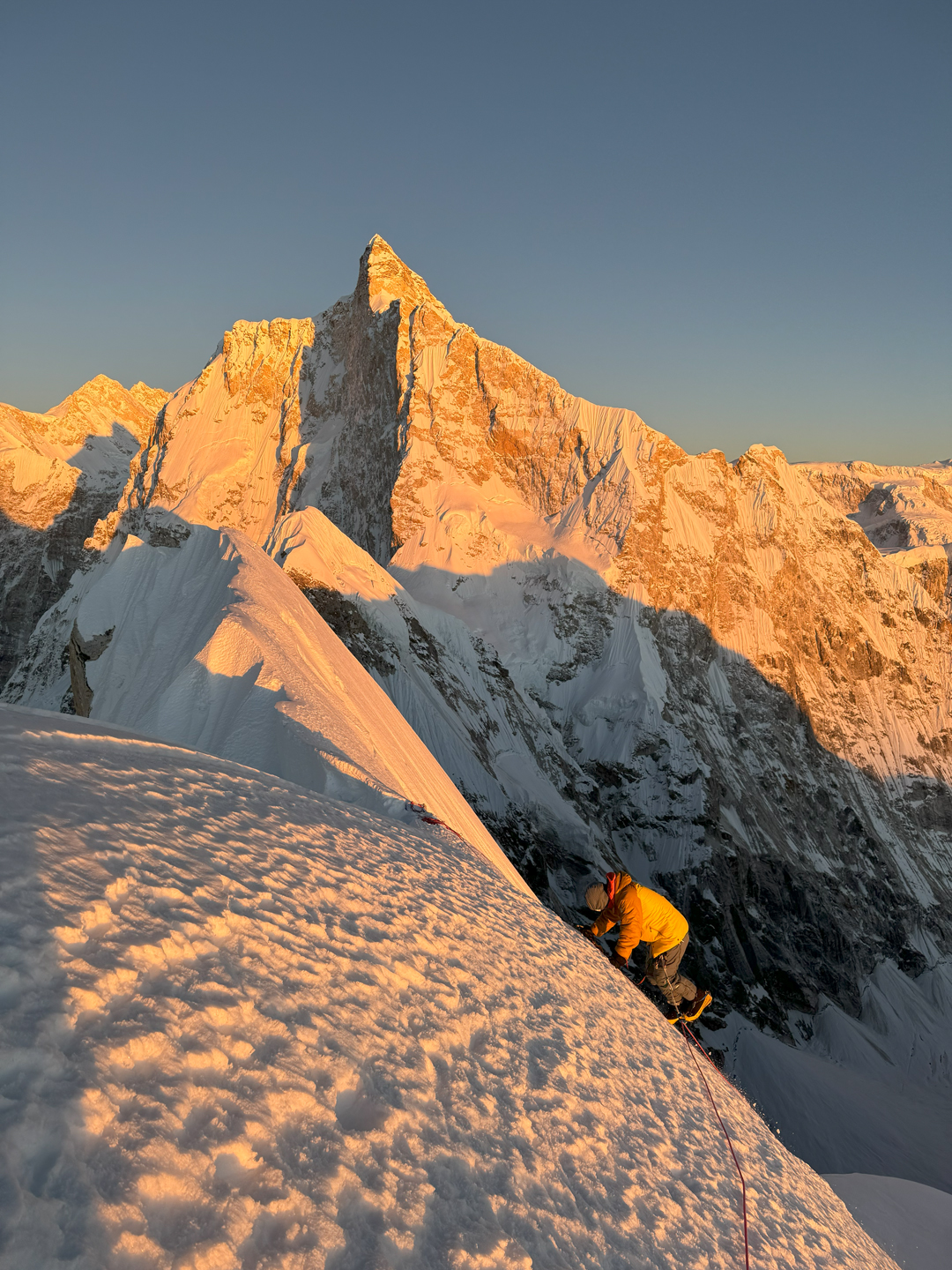Phole, First Ascent, via North Face
Nepal, Kangchenjunga Himal
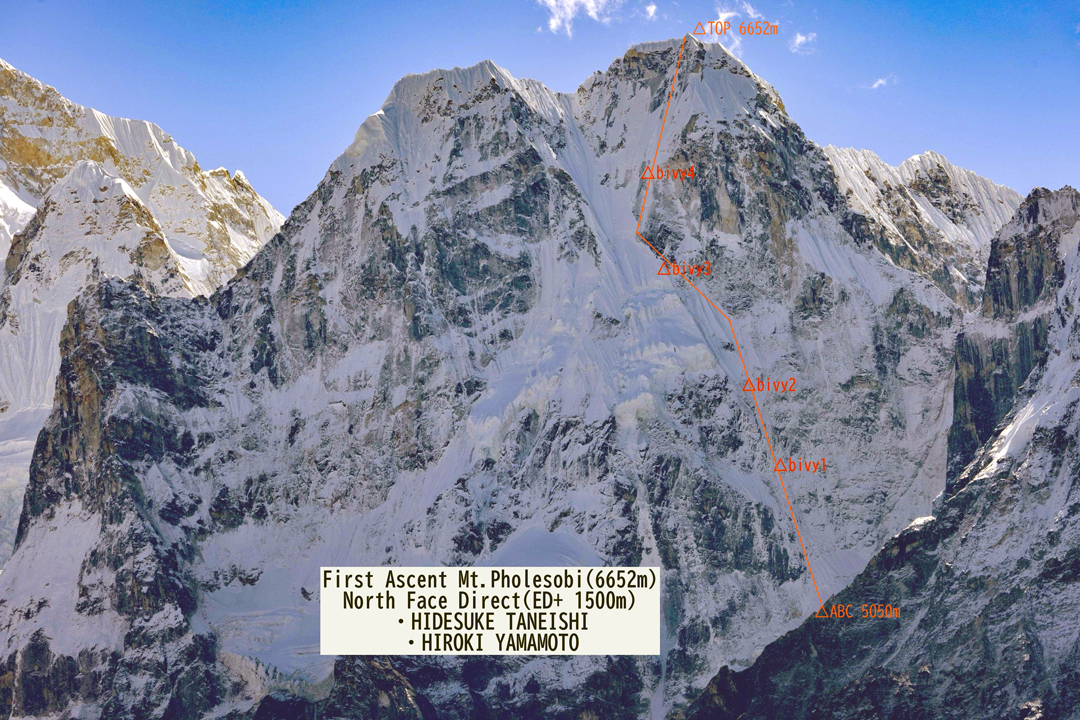
The ridge extending west from Jannu crosses three summits as it descends toward the Ghunsa Khola valley. The first two, Sobithongie (6,652m) and Phole (6,645m; both altitudes from the HMG-Finn map), are close together and separated by only a shallow depression. Indeed, some maps refer to them as one peak: Pholesobi. Much farther west is Kyabura (6,294m). All three were opened for climbing in 2002, but until 2023 none had received a serious attempt. [There are rumors that Sobithongie was attempted or climbed from the north around 20 years ago, but these are unconfirmed.] In a book written by the Japanese expedition that made the first ascent of the northwest face of Jannu, in 1976, Sobithongie-Phole is described as a “rocky head of hopeless rock and ice.”
Hiroki Yamamoto and I attempted the north face of Phole in autumn 2023, but due to illness we had to descend from around 6,200m (AAJ 2024). We returned in October 2024 for another attempt. The north face is so steep that tents cannot be pitched except in the middle section, using a snow hammock. Like the Americans who climbed the north face of Jannu in autumn 2023, we used portaledge-like G7 Pods.
We arrived at Kangbachen (4,100m) on October 9 and used a lodge there as our base camp. We acclimatized on Merra Peak, directly opposite our mountain. The American and French teams that tried Jannu East in the autumn had previously acclimatized on Merra, and we used their tent sites.
On October 26, Hiroki and I left base camp for our attempt on Phole with a little less than 30kg of gear on each of our backs. We climbed 1,000m over moraine and glacier to establish an advanced base at 5,050m, below the north face. We then took two days to break through the lower face, where protection was difficult to arrange. The ice was too brittle to take screws, so we excavated rock protection from under the snow. It was so steep that we were nervous about making long runouts. During the bivouacs, spindrift from the upper face swept over us all night and even got inside the Pod. Our clothes became wet and then froze, making us very uncomfortable.
On the 29th, we crossed the lower-angled middle section and reached the upper face. Next morning, we started up the initial steep wall, finding very thin ice. However, unlike the lower part of the face, the ice in this section was quite solid, and at the crux we were able to use micro-nuts and Tricams for protection. The climbing was like that in Alaska or Chamonix, and we enjoyed it.
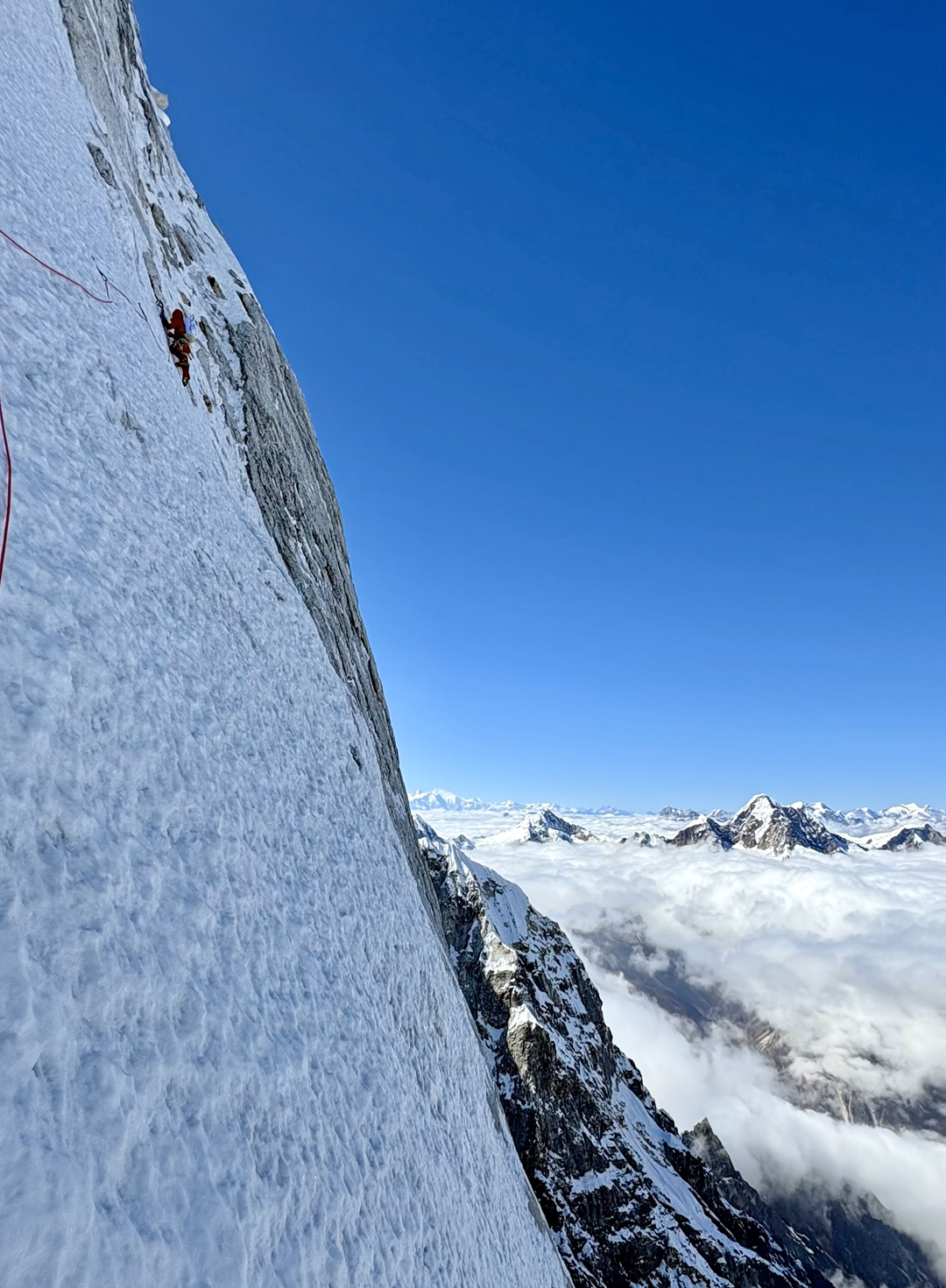
On October 31, we left the Pod and headed for the top. From base camp we had seen a chimney going directly to the summit. Now we could see this above us, but to reach it we had to climb a 100m rock wall. This was the second crux. In places the wall exceeded 90°, but cams, nuts, and screws were sound, and we were able to climb comfortably. We then ascended the icy chimney, followed by a sugar-snow wall with no protection. We broke through the cornice above and exited onto the ridge just below the summit.
Hiroki, standing next to me, shouted in joy, “We’ve done it!” We congratulated and embraced each other. Then we climbed upward for 30 seconds to stand on the summit. It was 5 p.m. Illuminated by the sunset, Jannu was stunningly beautiful. It was also clear that Phole, where we stood, was higher than Sobithongie, despite what the map says. Our altimeter registered more than 6,650m, and we judge Phole’s elevation to be around 6,652m.
After five minutes we started down, vowing to each other that we would get down alive. We regained the Pod at 8 p.m.
The next day, November 1, we descended the rest of our route, mostly by rappel but with some downclimbing. We used Abalakov anchors in the upper face and Tricams, pitons, slings, and nuts in the lower part. After almost 30 rappels, we reached the foot of the face at 7 p.m. The name of the route is simply North Face Direct (1,500m, ED+).
—Hidesuke Taneishi, Japan


